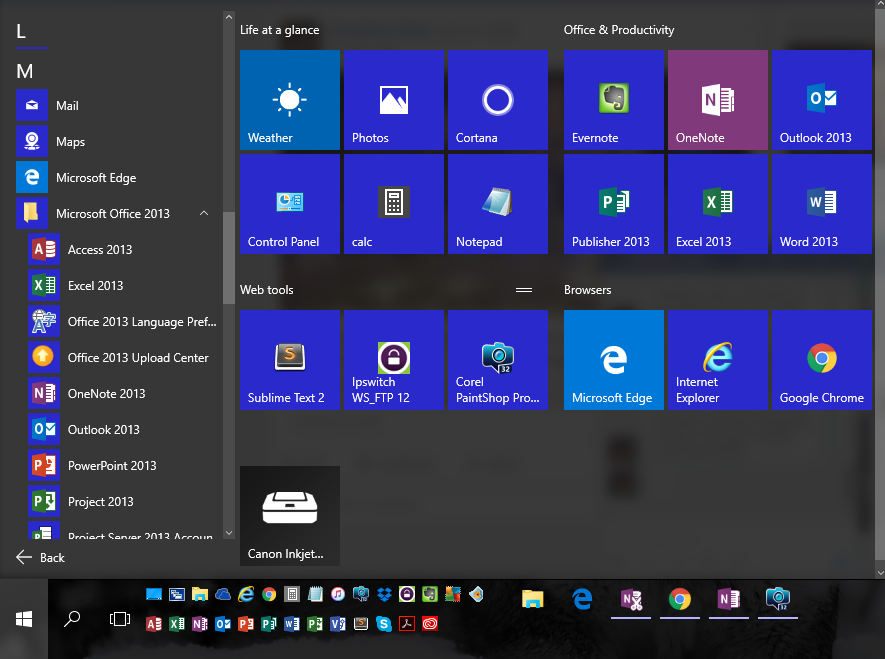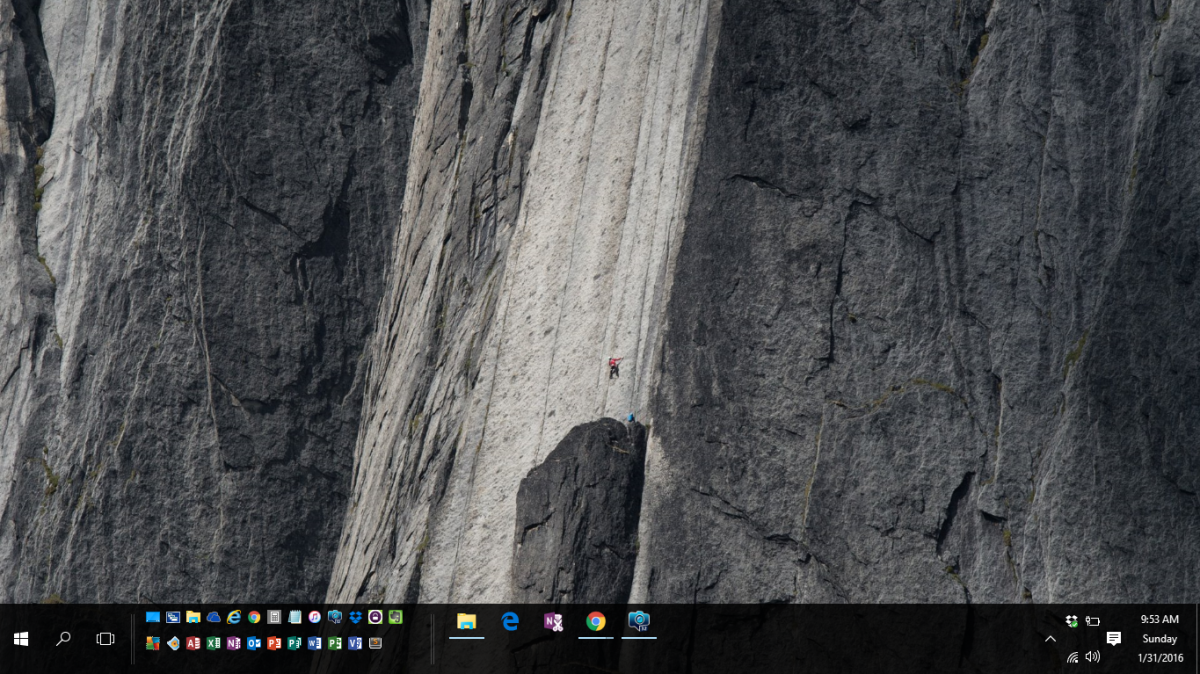I participated in the Unity Connect Free Online Conference this week. I didn’t find out about it until later in the week and thus didn’t have much time to participate, but I did want to watch a presentation tonight about how to get people to adopt SharePoint and learn more about it.
The gentleman who gave the presentation, Tom Duff (@duffbert), shared with us everything that his company had done to help people learn more about SharePoint. What’s interesting is that most of the things his company had done over time, we are starting with right off the bat. We’re building a training site, I have a blog, and we are starting monthly meetings for site owners. About the only things that they’re doing that we’re not (yet), is a biweekly conference call, and they turned their blog into a newsletter. Their training site is mostly videos, whereas mine is tutorials for now, but they shared with me the software they are using, and most of it is free, and one is a fairly low cost product. I plan on presenting this at work in the next few weeks, and I know that my Director would be quite willing to provide the “professional voice” we need for the introductions for our training videos.
It’s really nice to have all your hard work be validated as a good idea. I am excited!
Month: January 2016
Metadata, navigation, and more
The first day of Site Collection Administration class was spent learning some basic vocabulary:
Immediately doesn’t mean what you think it means
including that “immediately” means something very different to you and me, than it does in SharePoint. To us, “immediately” means “right away” or “this instant”. To SharePoint, it means “whenever I have a moment after my important jobs are finished,” generally speaking this means “sometime in the next 5-10 minutes.”
Navigation
We at the DSA have what we call a publishing site collection, which means that our sites work slightly differently. For our navigation, our two options are GLOBAL (top bar navigation) and LOCAL (left side bar navigation). In non-publishing site collections, they would be referred to as top navigation and quick launch respectively.
Note to SPOCK: when you are asked by a SharePoint application if you want something to be added to Quick Launch, it means “left side bar navigation”.
Lists vs Libraries
It was nice to finally get cleared up what the difference is between a list and a library in lamens terms. A library has a mandatory file attachment, and the column data is often about the attached file. A list does not have a mandatory file attachment (although it can have a file attached in some cases). A list is data about anything.
Metadata
Today was also metadata day. We need metadata to search, sort, and categorize our data and our files. If you want to be able to find something, you must use metadata in your daily lives.
We also talked about using folders in document libraries. Folders are not inherently bad, as they can help categorize. However, using too many folders makes things difficult to find and nesting folders within folders can make it almost impossible. Where possible and appropriate, use metadata to help you classify your documents.
Windows 10 – Where are the Start Menu shortcuts?
Oh… I want to share a quick peeve with you! Oh my gosh, this annoyed me SOOOOO much! In Windows 7, I could open the Start menu and use the right-click button to drag programs from the Start Menu to the quick launch bar.
Because the Windows 10 Start Menu is actually run by a database, the app links actually aren’t shortcuts. The database pulls the shortcuts from a different folder. So, right-clicking a “shortcut” from the Start Menu does NADA! ZIP!
I went to trusty Cortana. Actually, no I went to file explorer, and searched there for Start Menu. To my relief, the sneaky people at Microsoft had not renamed the Start Menu to something crazy.
For those of you looking for them, here are the paths for your Start Menu
Windows defaults: C:\Users\Default\AppData\Roaming\Microsoft\Windows\Start Menu\Programs
My installed programs: C:\ProgramData\Microsoft\Windows\Start Menu\Programs
Each time after I installed a program that I wanted to add to my quick launch, I had to go dig it up out of the Start Menu folders, so finally I was fed up and added the Start Menu folders to my “favorites” within File Explorer.
Later on in the day as I was installing new programs, I just let the programs add a shortcut to the desktop, and then toward the end of the day, I just did a right-click and drag to quick launch on those and chose MOVE to Quick Launch.
Windows 10 – backwards compatibility
Coming from Windows 7, Windows 10 is different in a couple of ways. With many people skipping Windows 8 and Windows 8.1, they may not realize how different Windows 10 really is.
I found that out quite quickly, when I was trying to install a couple of programs for which a Windows 10 version hadn’t yet been created.
I had to set the programs to run in Windows 7, which is fairly easy to do, once you know how. Right-click on the program file you want to run, and choose Properties. Then under the compatibility tab, choose Windows 7. For the most part it’s that simple.
For a number of programs, I just went ahead and downloaded the new version, including DropBox and EverNote. For others, I set the compatibility mode, and it seems quite happy. Just keep that in mind as you upgrade.
Windows 10
Background: my laptop was very sluggish. We were looking into needing to a “rip and strip” – format and start over. I hate rip and strip because there’s always something I forget to back up. So, I asked the IT director at work – what do I do about my slow machine? He suggested getting an SSD hard drive (solid state drive) and replacing my current hard drive with that. OK. So I got one for Christmas from my sweety, formatted it (very important), and then purchased Windows 10 to put on the drive.
I will attempt here to list everything I did to customize the Windows 10 experience for myself. This post may get amended as we go. I should have taken notes as I was doing this, but here goes.
- Add Quick Launch
- this is always my first task. I love my quick launch, mainly to keep inactive icons out of my work space (task bar), and also so I can open multiple instances of an application such as NotePad
- to add the Quick Launch, right-click on the task bar and choose Toolbars, add New Toolbar. Choose the %UserProfile%\AppData\Roaming\Microsoft\Internet Explorer\Quick Launch folder.
- once it was active, I turned off “show title” and “show text”
- Add my most used programs to Quick Launch
- Show desktop (well, quick launch already comes with it, but it’s one of my most-used features
- Notepad
- Calculator
- File Explorer
- Internet Explorer (which for some reason is hidden within a context menu somewhere)
- Later I added various other programs that use most often, including Paint Shop Pro, EverNote, DropBox, OneDrive, Microsoft Office Suite, and my other browsers
- Change the size of Cortana to be just the looking glass icon. I don’t like my task bar filled to the brim.
- Changed the power settings for my laptop
- Sleep settings: keep battery defaults, set sleep to never when plugged in
- Power button: do nothing when plugged in
- When closing lid: I initially set it to do nothing because I wanted the laptop to keep running while doing installs etc. But given that my laptop still gets hot, I set it back to sleep for now. I’ve been used to that with this laptop anyway.
- Theme: I set it to Windows 10. Partially because I didn’t like the black screen with the blue window on it. It was too dark for me. Eventually, I am sure I will find another theme, but out of the box it only comes with 3 defaults and 3 high contrast – 3 of which feature a black background (Why??) and the white background one is a little too high contrast for me. So anyway the Windows 10 one has some pictures that it rotates through. Fairly seamless, quite pleasant.
Personalization:
- Background: I didn’t just want a solid color – that’s too boring, but didn’t want to spend the time figuring this part out. I have it rotate through the pictures.
- Colors: for now, I am letting Windows 10 pick an accent color. If that drives me nuts, then I will pick a color myself. I turned off task bar color: I prefer the black. I left the task bar transparent. It’s not too distracting, and gives it a little bit of interest. As a side note, I am surprised at my willingness to let Windows 10 features shine through. I used to be a Classic Windows through and through person.
- Lock screen: I chose Background, and then the blue tunnel picture because it was the one with mostly the same colors. I may choose my own picture for that one day, but this one is pleasant. I didn’t like the default with the view of the beach from within a cave.
- Start: I turned off full start screen – that would annoy the bejeezes out of me. Everything else I left on for now.
Desktop Icons:
I chose to turn off the desktop icons. While I was used to having them in the left corner of Windows 7, I mostly ever used My Computer, which I can find in File Explorer anyway. I may add them back at some point, but for right now, I like having a clean desktop with nothing on it.
A bit about my background…
As head of marketing at a for-profit career college, I began using SharePoint in 2007 to manage the day to day operations within the marketing department, which served 30 campuses. In addition to using SharePoint to manage the calendar, vendor contacts and task list for our department, we used it to provide an electronic reference for marketing activities for the campuses, which was used for accreditation and operation purposes.
In my current employment, committee members working on the SharePoint implementation project found out about my prior experience with this platform and they recruited me to join. From there, I participated quite heavily in the discussions and implementation plans, which led to me being in my current role. Being on the ground floor of implementation is very exciting and I look forward to sharing (and documenting) everything I am learning as I go.
What to expect from this site
My goal is to provide short snippets of training for basic SharePoint Online and Office 365 use, as well as share some of the more advanced tips and tricks I am learning as I go.
While much of the content on this site will be from tutorials and tidbits that I post on my work site, some content will be exclusive to this site for security or other reasons. Overall you’ll find that my writing style can have a tone of sarcasm, and I can be a little long-winded in my attempt to provide context.



